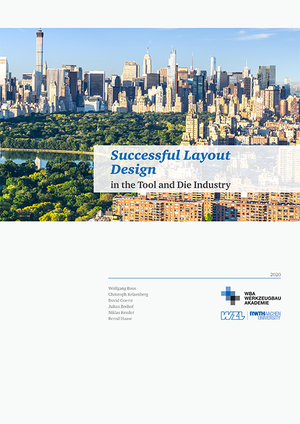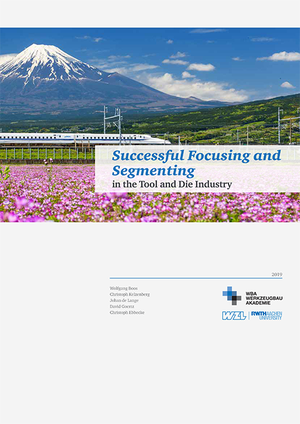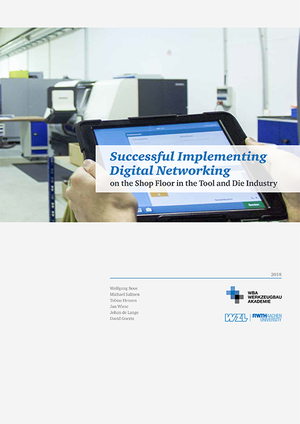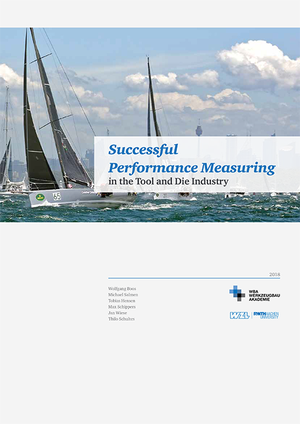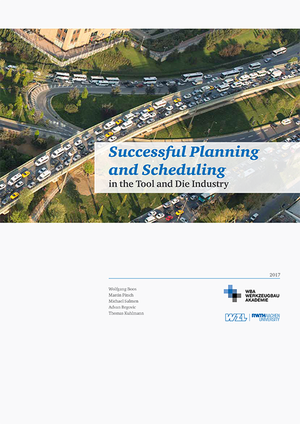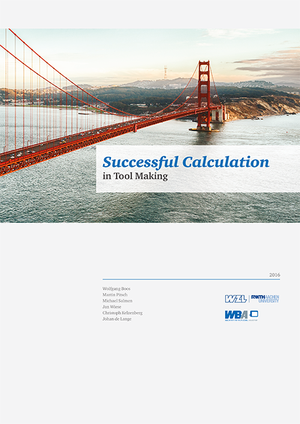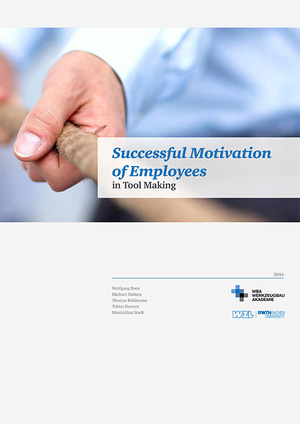our studies
2020
Successful Layout Design
This study, „Successful Layout Design in Toolmaking“, provides tool shops with a practiceoriented procedure for systematically designing their own layout in line with company-specific constraints to maintain their competitiveness in the long term.
2019
Successful Focusing and Segmenting
In order to be able to meet the challenges of a heterogeneous range of products and services as well as opposing target dimensions, focusing and segmenting the value creation process of a toolmaking company is a suitable approach. The focusing of the product and service spectrum includes both the limitation to economically significant services of the respective tool shop and the strategic, organizational, and technological harmonization of product and service creation.
2018
Successful Implementing Digital Networking
The tool and die industry is facing far-reaching changes. The fourth industrial revolution is promising an abrupt rise in productivity based on smart networks for manufacturing resources. The foundation for this is the use of networked digital devices on the shop floor. Similar to other industries, the systemwide use of data offers a chance for the improvement of transparency and efficiency increase.
2018
Successful Performance Measuring
The given study gives a summary of relevant key performance indicators in the tool and die industry and presents a cockpit of key performance indicators (KPI cockpit) for performance measurement.
2018
Successful Supplier Management
Due to a batch size of one as well as the associated low order quantities and purchasing budgets, supplier management in the tool and die industry is a challenge. Suppliers with deep technological competence and efficient processes must be systematically identified, further developed and integrated into business processes. This requires a structured process that is ideally supported by digital tools. In the long term, systematic supplier management enables tool shops to shorten lead times, increase flexibility and reduce costs.
2017
Successful Planning and Scheduling
Proactive planning and scheduling in the tool and die industry addresses the target figures reliability, cost optimization and transparency. It has a consistent planning structure that is individually adapted for each company as well as a binding planning process. The planning system is optimally supported with efficient procedures and systematically ties in external suppliers. Ultimately, the right planning and scheduling can sustainably strengthen the competitiveness of tool shops.
2016
Successful Calculation
For tool rooms, a successful calculation of costs is an important prerequisite for their own ability to compete. With a lot size of one, this calculation is a major challenge within the tool making industry. It is composed of a company-specific approach, a reproducible classification and an intelligent back-coupling of information.
2016
Successful Motivation of Employees
Employees are the backbone of their companies, especially in know-how intensive sectors such as the tool and die industry. They carry the company’s knowledge in themselves and help to achieve economic success. Particularly in times of shortage of skilled workers, employees are both the rarest “resource” and most important success factor. Hence, it is all the more important to bind them to the company for the long-term and mobilize their full potential. Studies show that employees are more productive and loyal if they exhibit a high degree of satisfaction and motivation. Companies of the “new economy”, such as Google or eBay, have long recognized the potential in employee motivation. However, in the tool and die industry, which is characterized by small and medium-sized enterprises, motivation of employees is often not addressed, even though it plays a vital role for the long-term preservation and development of competitive ability.
